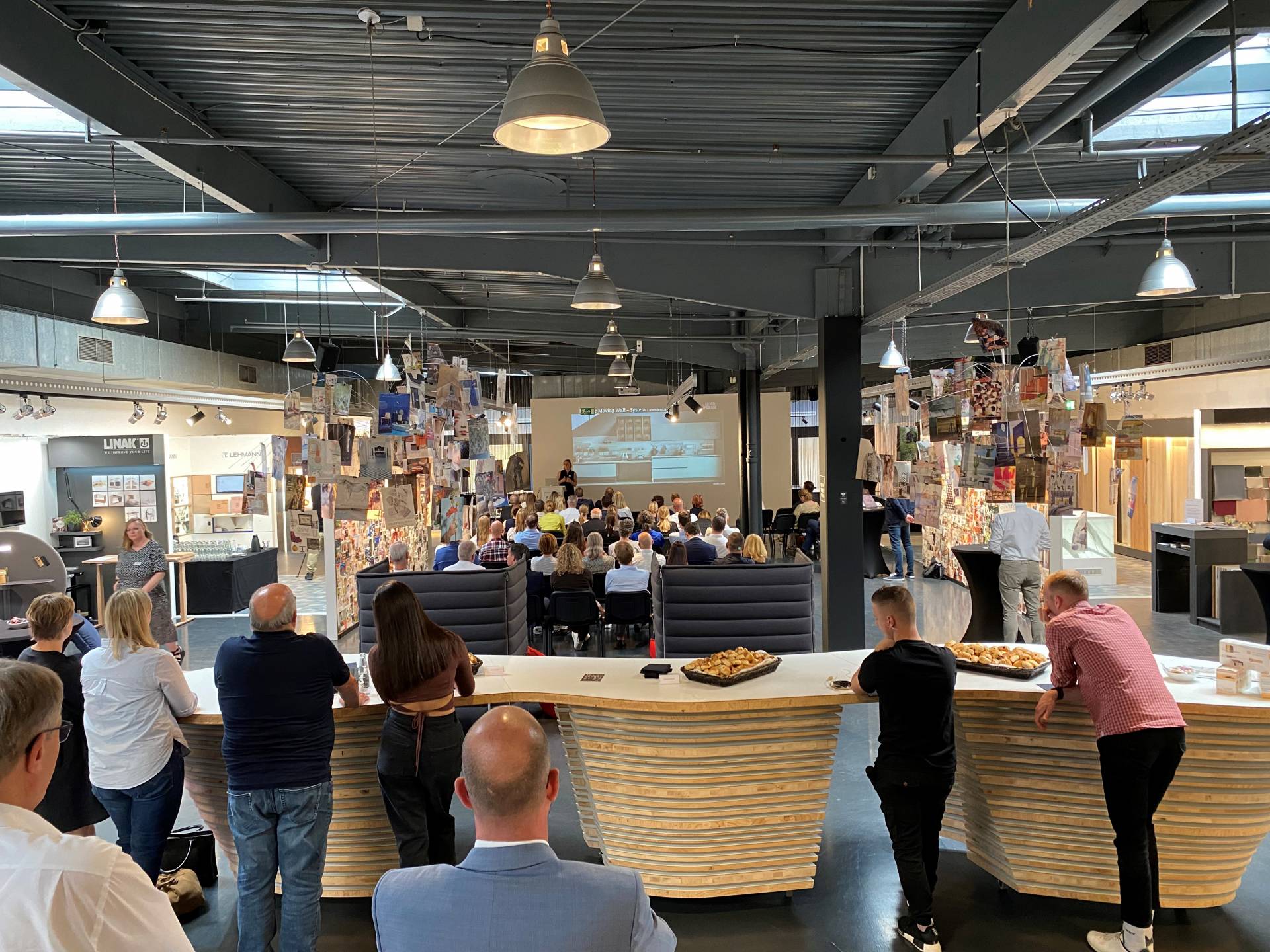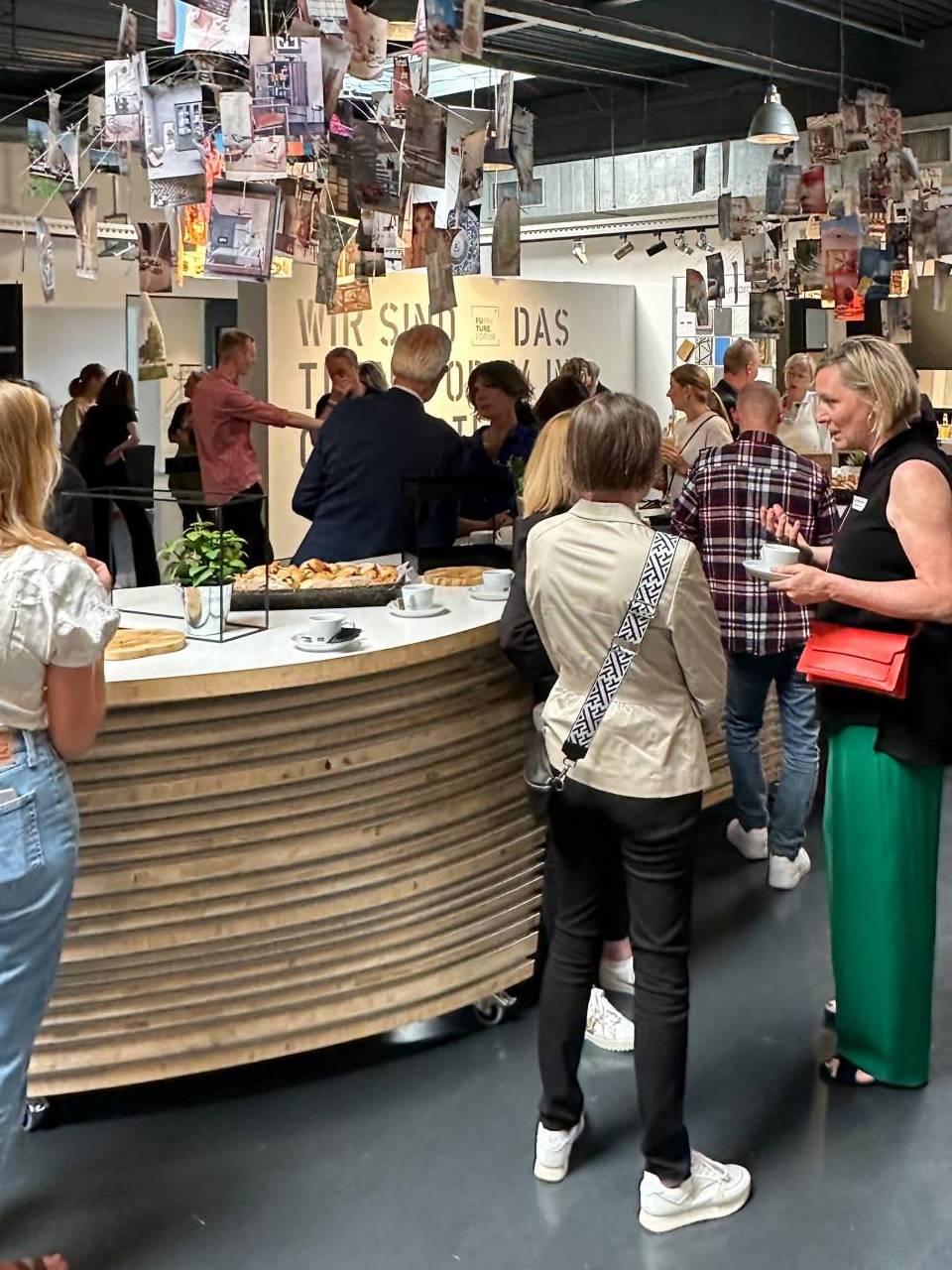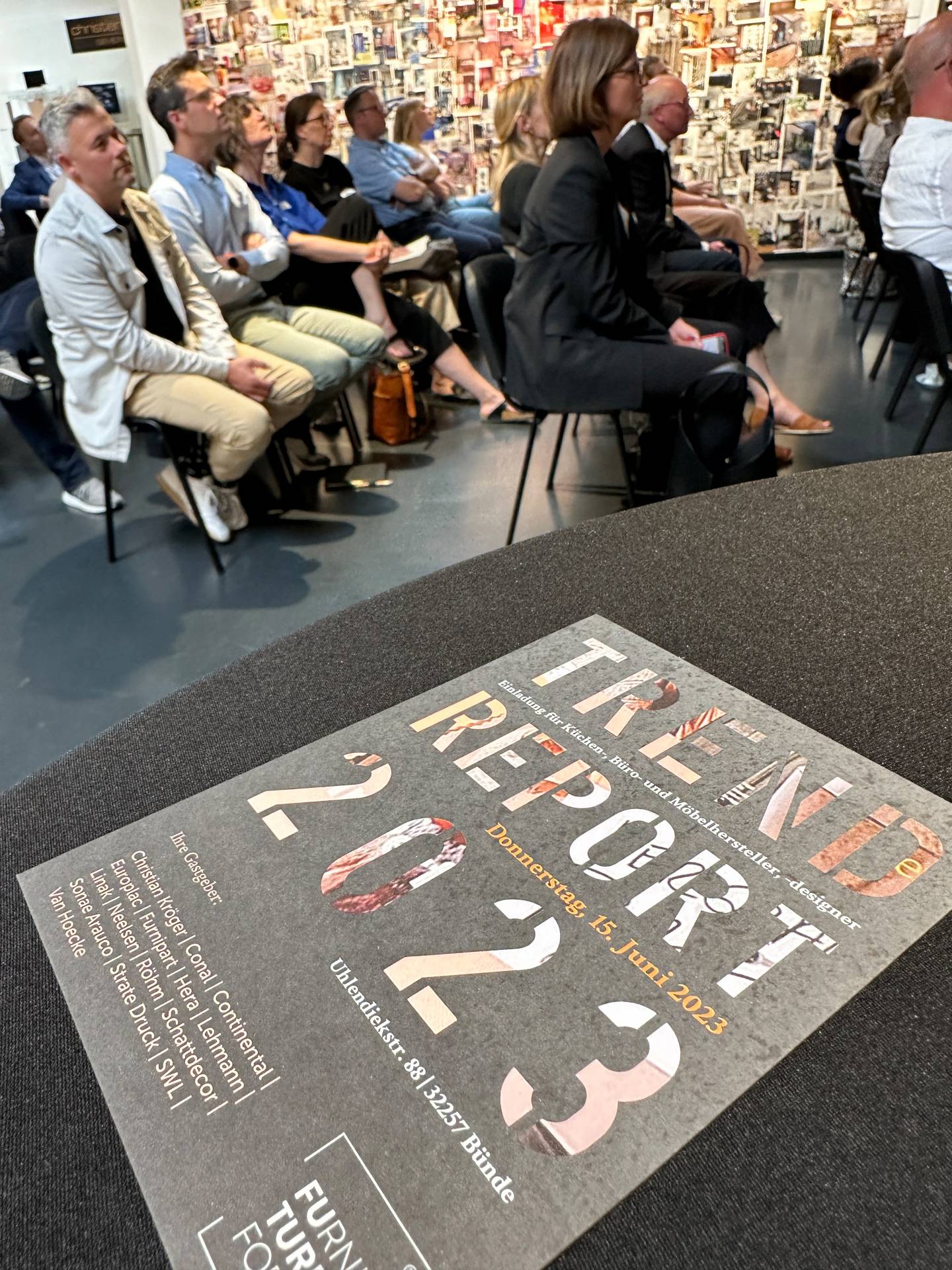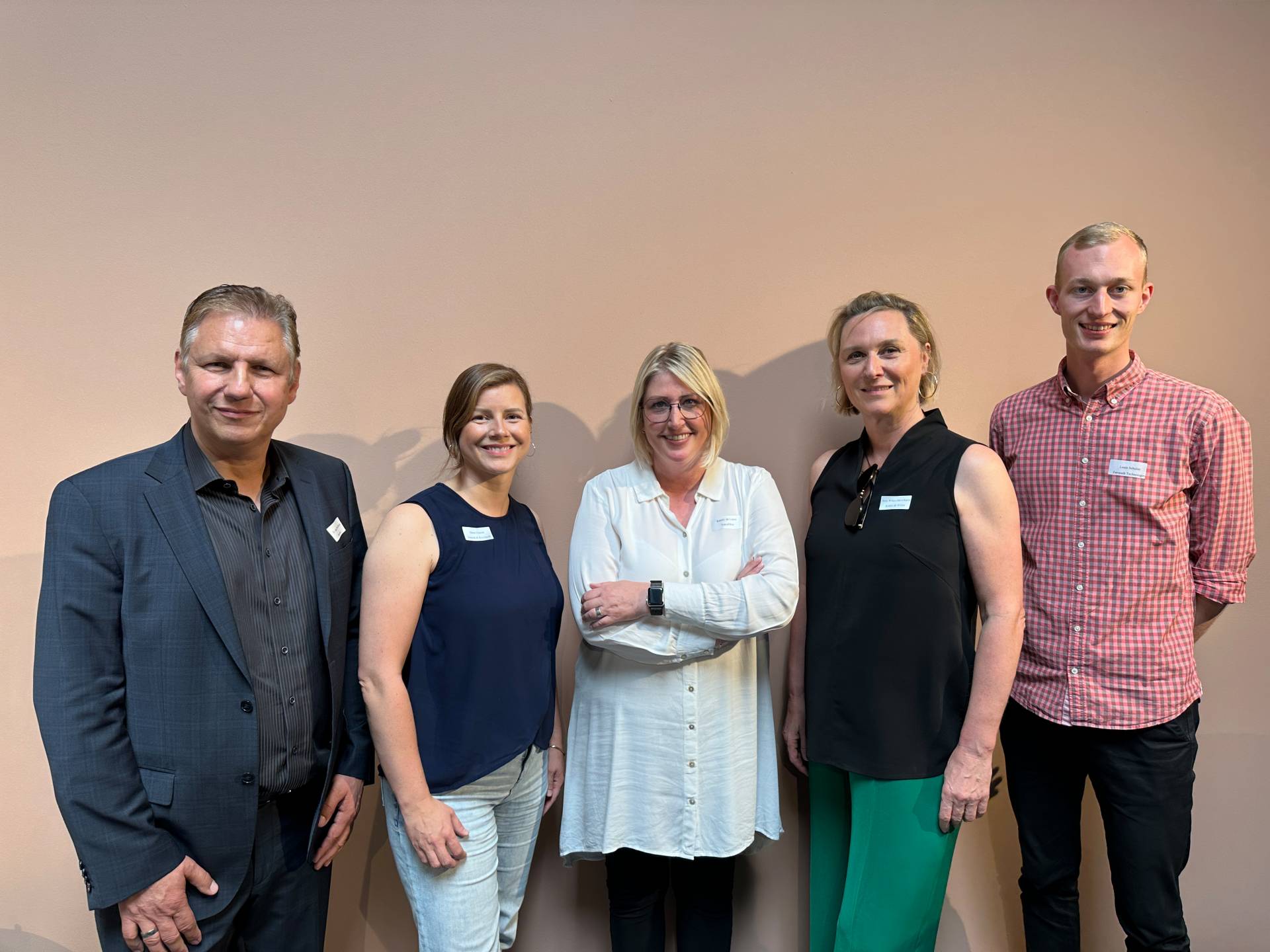Shaping tomorrow’s business with the megatrends
With over 100 participants, the FURNITURE FUTURE FORUM was the trend platform at the heart of the furnishing industry on Thursday, June 15, 2023. The initiator Katrin de Louw had invited four experts who provided the audience with important food for thought for times of upheaval. The megatrends presented were a common thread running through all the presentations: Digitalization, demographics and sustainability.

The Silver Upgrade: Housing Culture and Demographic Change
Irmy Wilms-Haverkamp, Managing Director of Köhler & Wilms, designer and trend expert, wants to shape demographic change positively with a “Silver Upgrade. Anything else would be fatal, because she sees a demographic tsunami approaching society as the baby boomers, the cohorts born between 1955 and 1969, gradually retire. This is accompanied by an increase in the number of single-person households and a growing risk of loneliness. The current situation: only 30 percent of baby boomers’ housing is barrier-free, and there is far too much oversized housing. So why is there a lack of vision for Silver Living?
Irmy Wilms-Haverkamp pointed out that there are so many ways to rethink this: for example, digital connectivity, because links make new living solutions possible. Ambient Assisted Living (AAL for short, also: age appropriate assistance systems for an environmentally supported, healthy and independent life) stands for various technologies that support people in need of care in managing their everyday lives inside and outside their own four walls. It enables people to have independence, care, participation and inclusion. The technologies are there, but they have not been widely installed or used. The reality is far removed from needs-based housing solutions: The existing building stock is often outdated, and energy efficiency is mostly wishful thinking.
The transformation of cities is creating new spaces of opportunity – retail space is being freed up, traditional office concepts are being put to the test. The buzzwords of the paradigm shift are reduction and densification. Downsizing should rather be understood as what it usually is: an increase in quality. This is also a creative task for furniture design.
Sharing concepts are also conceivable; after all, baby boomers are experienced with shared apartments and have a different mindset than the generations before them. So where are the silver communities? The call from the housing expert: “Let’s create positive spaces for seniors!” With lots of greenery, matte and natural surfaces and soft shapes – and also with more color against the gray age stereotype.
Irmy Wilms-Haverkamp sees Ikea as a silver pioneer, because the Swedish brand is tackling demographic change. Example: the “SilviaBo” settlement, built for demented residents with cognitive impairments and equipped with furniture from Ikea. And the “Omtänksan” collection, designed for an older audience, will certainly be expanded in the future. Idealism is only one motive here. Because demographic change is also creating a huge consumer goods market, as the book “Stage (not Age)” by author Susan Wilner Golden makes clear.
Future Office – an ecosystem in constant change
Office spaces are in a state of upheaval. Inken Johanne Gierow, Managing Partner Design & Innovation at Joppich & Rieckhoff Handelsgesellschaft für Büroeinrichtungen mbH, addressed this in her presentation, “Future Office – an ecosystem in constant change”. The New Work expert asks the question of why in every project. What should an office space do for a company? Currently, the biggest common denominators for space redesigns are the war for talent, digital transformation and more space efficiency. However, these cornerstones are driven into the ground differently by each company, so there is no one concept, because New Work is primarily a question of corporate culture.
The office is celebrating a renaissance after the pandemic. Studies say that the home office is not the optimal way to work because it is mostly a solitary work mode. But: What functions must office spaces fulfill today so that employees feel comfortable there and can work efficiently? Planning factors are: Flexibility of time, flexibility of place, working methods and work tools, and technical requirements. Companies should see space as a strategic resource, advises Inken Johanne Gierow, because 76 percent of all employees are influenced in their job decisions by the aesthetics of an office. Wow effects are therefore also an effective HR tool, and it’s time for new design principles such as Single & Shared Areas, Fix vs. Fluid Concepts, Open Space and Connectivity. New Office principles consist of enabling people to maintain a healthy posture, bringing outdoor spaces inside, and using materials in a reflective way because they (can) stimulate the senses.


Furniture design at the turn of the times – which design strategies are gaining in importance
The focus of the industry day at the FURNITURE FUTURE FORUM was the new “Trendfilter Report 2023”, freshly finished for the event. For a long time now, talking about short-lived interior trends has been “too short-sighted” for Katrin de Louw. She describes furniture design at the turn of the times and asks which design strategies are currently gaining in importance in order to manage new business areas in the long term. In essence, she sees four major guidelines for this:
- Color: Cheerful colors, “Happy Colors” are in demand, but in the finish they tend to be matte or metallic and not gaudy. Warm and cool colors are often seen in the mix, but the combination is the all-important. The effect of the colors is stimulating and vitalizing. On the other hand, you can also see many neutrals, soothing, gentle colors.
- Customer Benefits: How can design simplify and improve life? A huge trend is “biophilic design” for health promotion, in which nature makes its way into our interiors and cities in terms of design. Also in demand are system furniture and cross-room solutions. It is a matter of no longer thinking in terms of product categories, but in terms of living spaces. Designers are also working on finding new design solutions to everyday problems.
- Sustainability: A megatrend that finds expression in new materials, the search for alternatives, and the circular economy. “Make it simple demountable” is a guiding principle, because materials will become much more expensive in the future. Compostable furniture and modular construction methods are therefore in demand so that components can be replaced more easily. Deposit systems will also find their way into further product areas.
- Digitization: Digitization opens up completely new design possibilities (“Digital Design Support”). With 3D printing, the design language also becomes ornamental and ornamental again. In sales, AI can be used very profitably as a service tool.
Supply chain management – new software for robust and sustainable transformation
A fascinating digital example of how green tech can positively shape economic change was shown by Louis Schulze, founder of sustaind, which has set out to get a grip on supply chain management by digital means. The startup sustaind analyzes and reports material data, CO2 emissions and procurement risks, cutting the effort of recurring data collection in half. An AI then identifies areas for action, suggests substitute materials and measures to facilitate the most profitable path to sustainable goals. Monitoring KPIs to calculate profitability ultimately leads to new business areas and models.
Reset! How the interior & furniture industry can reinvent itself
Finally, Dr. Jens-Uwe Meyer, CEO of Innolytics AG, author and expert for digitalization and future strategies, pressed the “reset” button. His approach: Disruption cannot be prevented, the only question is who implements it. Adaptability is essential for survival: Blockbuster has disappeared, Nintendo has not.
Dr. Jens-Uwe Meyer also addressed the three megatrends, digitization, demographics and sustainability, and stated: 1. Digitization 2019 is no longer digitization 2023. The new AI quality is striking and the increase in productivity already achieved is dizzying. This can be leveraged for better pattern recognition results, for example. 2. A huge market is emerging as a result of the new sustainability standards. Especially in agriculture, innovative practices and formats such as vertical farming are emerging. 3. the skills shortage is hitting us worse and worse, so the service and infrastructure in Western societies is not working right now. Technology can help solve the dilemma: How can we implement services without human labor?
At the corporate level, innovative strength is desired, but in reality this is usually a pious wish: A management system for honest and transparent innovation is therefore needed that takes into account the three essential cornerstones of strategy + culture + projects. Clear, measurable goals are important to make innovation navigable. Barriers to innovation must be removed. In practice, lack of openness, lack of enthusiasm and lack of transparency often lead to zombie projects. The most powerful trigger for innovation: Dissatisfaction. The feeling that things could be even better…

The program of the FURNITURE FUTURE FORUM, which is open all year round, continues with “MÖBELVISIONEN”, namely on November 9, 2023, when new processes, concepts and materials for the entire furnishing sector will be on the agenda.
Anyone who is interested is welcome to sign up for the invitation mailing list here.